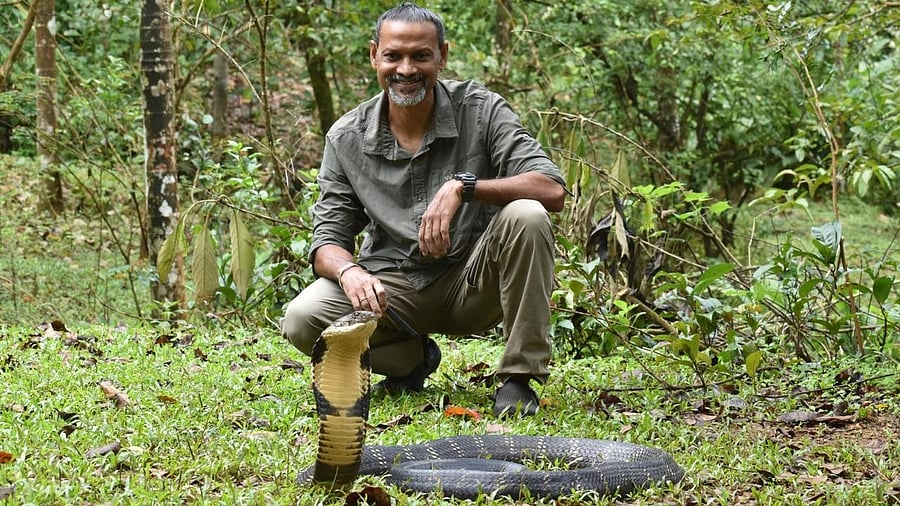
Wildlife biologist Gowri Shanker with a King Cobra during one of his field visits in Western Ghats.
Photo courtesy: Kalinga Foundation
Bengaluru: In a big boost to the conservation of the much revered and feared king cobra, researchers have discovered that there are four species of the snake with different traits spread over many countries, two of them in India.
Wildlife biologist P Gowri Shankar, who discovered the new species after 12 years of research, including DNA analysis and field work done in collaboration with a team of scientists spread across the world, has described the species for his research work, highlighting the need to protect the habitat of each.
Shankar, known for his work through the Kalinga Foundation, also rechristened the king cobra in the Western Ghats as 'Ophiophagus kaalinga'.
"A bite from the kaalinga over 15 years ago nearly killed me. When the doctors told me that the king cobra anti-venom from Taiwan didn't work, it spurred my research work that took me to several countries, solving the 185-year-old riddle of whether the king cobra is one species or several," he said.
Till now, Ophiophagus hannah, described by Theodore Cantor in 1836, was seen as the only species of king cobra in the world. Though some scientists had guessed about the possibility of more species, no one had established it.
Shankar's work, part of his PhD at the Indian Institute of Science (IISc), describes four species, including two new ones, of the king cobra. Besides the morphological differences, there is about 1 per cent to 4 per cent difference at the genetic level. "It may not seem much. But remember, humans are just 1 per cent different from Chimpanzees," Shankar said in a note.
Besides stressing the need to protect the habitats of each species, the discovery highlights the need to develop anti-venom specific to the species, which will help save people coexisting with the king cobra and reduce conflict situations.
Khandre, who spoke about the matter, stressed the need to protect the habitat.
"We are seeing a great number of species pushed to the edge of extinction. At the same time, I have been told that 58,000 people die of snake bites in India every year. We need to develop antivenom and also spread awareness on the matter," he said.
Principal Chief Conservator of Forest (Wildlife) Subhash K Malkhede said successful conservation requires working with the people sharing the habitat of the wildlife.
"In Karnataka, we have seen a remarkable display of coexistence and tolerance towards king cobras. Spreading awareness will help us further," he said.
4 species of king cobra
> Western Ghats king cobra (Ophiophagus kaalinga)
Habitat: Western Ghats in peninsular India
> Northern king cobra (Ophiophagus hannah)
Habitat: Pakistan, north and eastern India, Andaman Islands and several countries in southeast Asia.
> Sunda king cobra (Ophiophagus bangarus)
Habitat: Malay Peninsula, Greater Sunda Islands and parts of southern Philippines.
> Luzon king cobra (Ophiophagus salvatana)
Habitat: Luzon (island) in northern Philippines